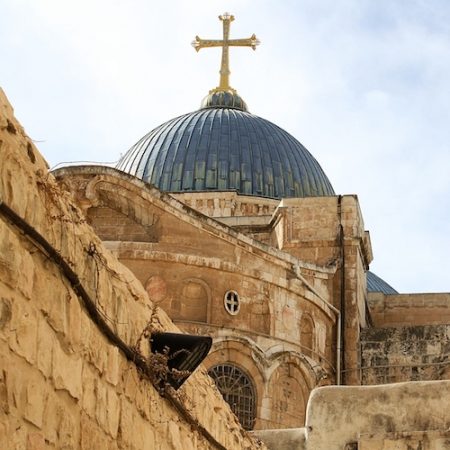Today was about the way of Jesus into Jerusalem, his crucifixion, burial and resurrection. It was a long day that ended at night with a sound and light show in what was Herod’s Palace in Jerusalem.
We began with a short trip to the Mount of Olives.
Israel is full of mounts with olives, so the name is not special — but the site is. Immediately it is clear that despite all the language of ‘going up’ to Jerusalem when you stand on the Mount of Olives you look down on the city and see everything very clearly. Near here Jesus wept over the city and its failure to recognise him and the moment of his coming. Between the Mount of Olives and the city walls that also bound the Temple site is the Kidron Valley which is now filled with Jewish and Muslim graves.
From here we walked the path down into the valley via the Garden of Gethsemane and its adjacent church building. This was a precious connection with the localities and distances Jesus covered in his last days.
From here we entered the old city coming quickly to Bethesda which is the site of a healing in John’s Gospel 5:1-17. The drama of the pool’s discovery and positive identification revolves around scholarly dispute over whether John’s Gospel really could be accepted as coming from a first hand eye witness. This Wikipedia article provides more on this and related issues.
Archeology shows that what John described in this gospel account is actually how it was. Look at the photos below which show the lower of two pools that could be excavated without undermining residential buildings. This is where Jesus performed a sign.
From Bethesda in Arab Jerusalem we walked into and down under a convent which had a basement exposing stone paving that Jesus would probably have walked on as he carried his cross. From here we entered into the throbbing busyness of markets and traffic of all sorts in narrow lanes to trace part of the Via Dolorosa. It was chaotic!
This brought us to an approach to the Holy Sepulchre marking the place of execution and the tomb of the resurrection, both in the same building. We came in through the churches of the Ethiopian and Egyptian churches. These were markedly simpler and less endowed than church buildings of other Christian denominations present there. Squeezing through their passage ways in dim and uninviting buildings we came to the front of the Holy Sepulchre and entered in.
I resolved to see as much I could – which involved some queueing – but not to queue for a personal veneration of the crucifixion or resurrection spots. That would have involved hours of waiting and was not something I felt drawn to. Below is a photo of veneration at the site of crucifixion. Of great significance is the fact that crucifixion always happened outside the city walls. While the site is now inside the city walls this was not so in Jesus’ day.
From here it was time for lunch and an hour to explore the inner lanes of the old city on our own.
After lunch we walked to another site some claim was Golgotha. Since the 19th century a skull-shaped rock outcrop with a garden and a tomb has been promoted for consideration. Evidence points away from this, so I am unconvinced, but the garden was good setting for our group to celebrate Holy Communion as the afternoon light softened.
After a necessary shower (still quite hot!) and dinner we were off again to a sound and light show. This depicted the many who had come to Jerusalem through the centuries.
Tomorrow we head for Samaria.
Please do feel free to post comments online to share with others via the blog pages on the website, or email me your thoughts if you wish.
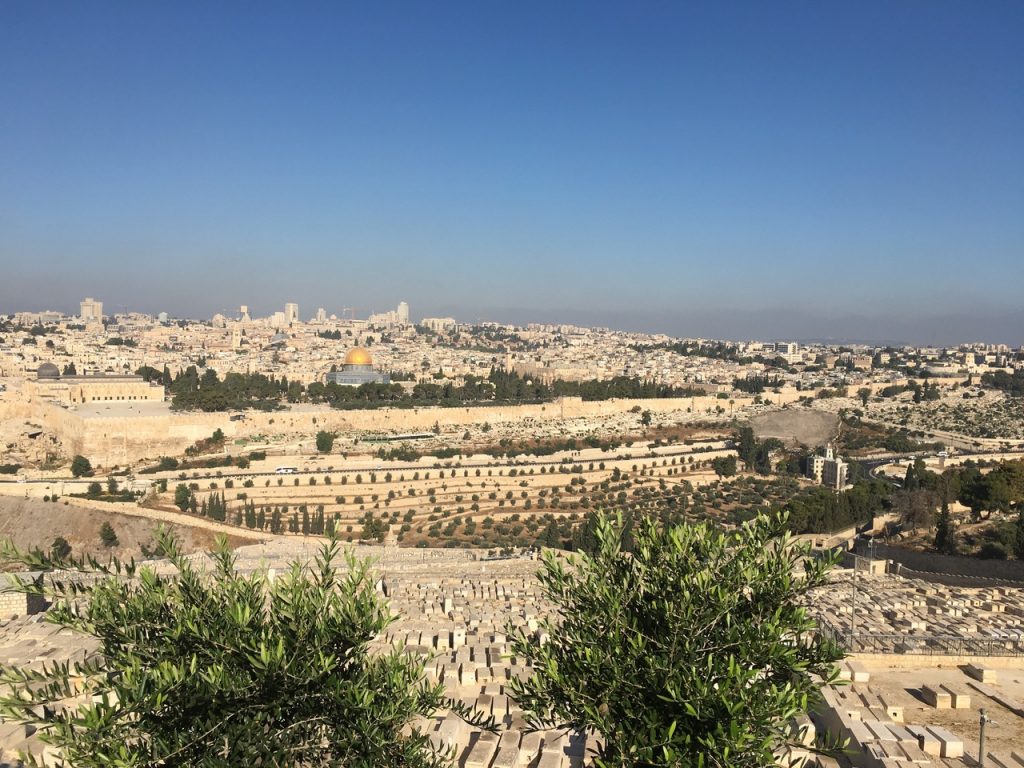
The view from the Mount of Olives to the Temple Mount across the Kidron Valley. 
The Olive Garden at the base of the Kidron Valley believed to the the Garden of Gethsemane. 
A panoramic shot of the Church of Gethsemane. 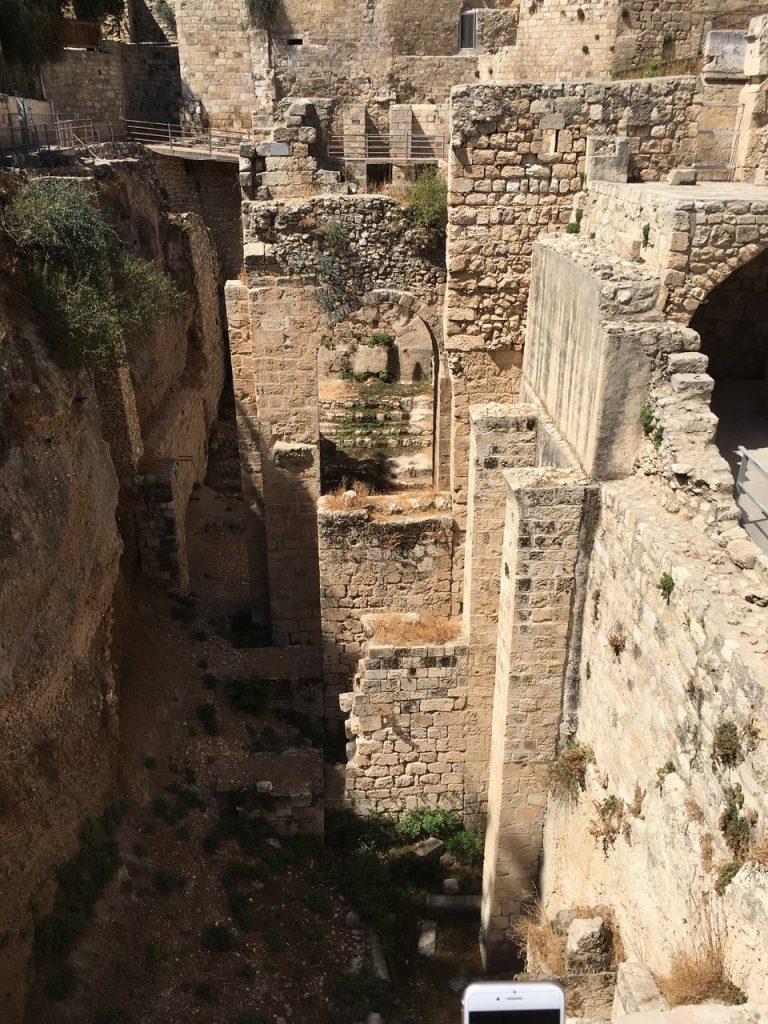
Looking down the layers at the site (through the last arch) to see the steps at the far end where Jesus encountered the man waiting for the waters to be stirred. 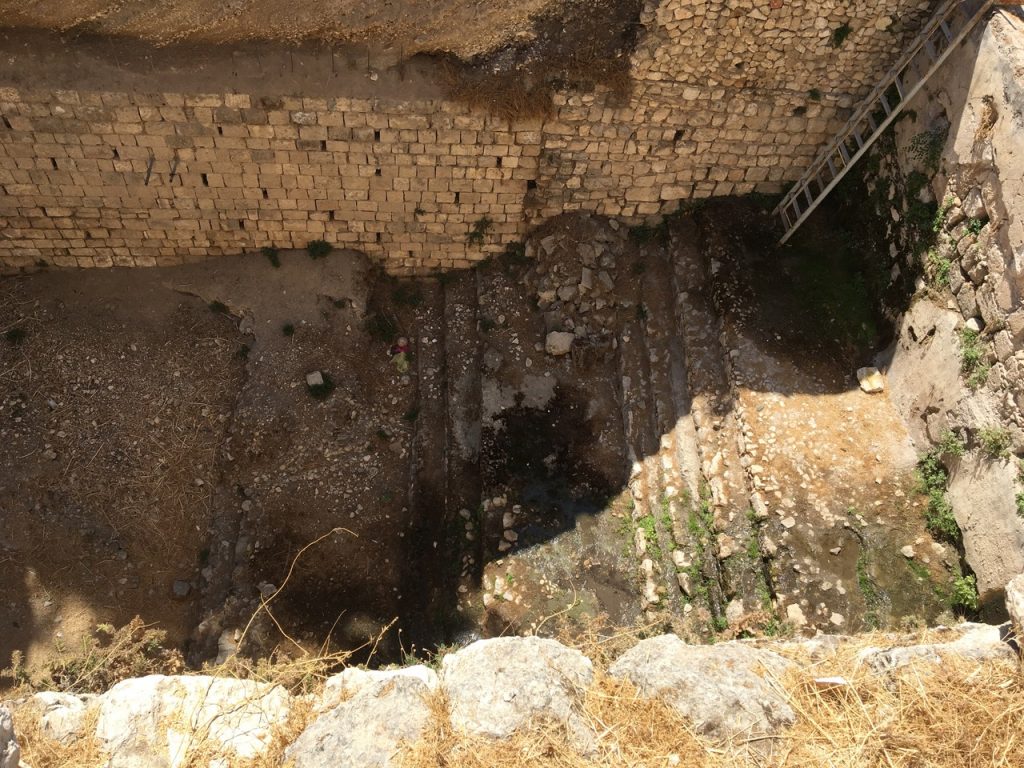
Close up of the steps which show where Jesus brought healing to a crippled man on the Sabbath. 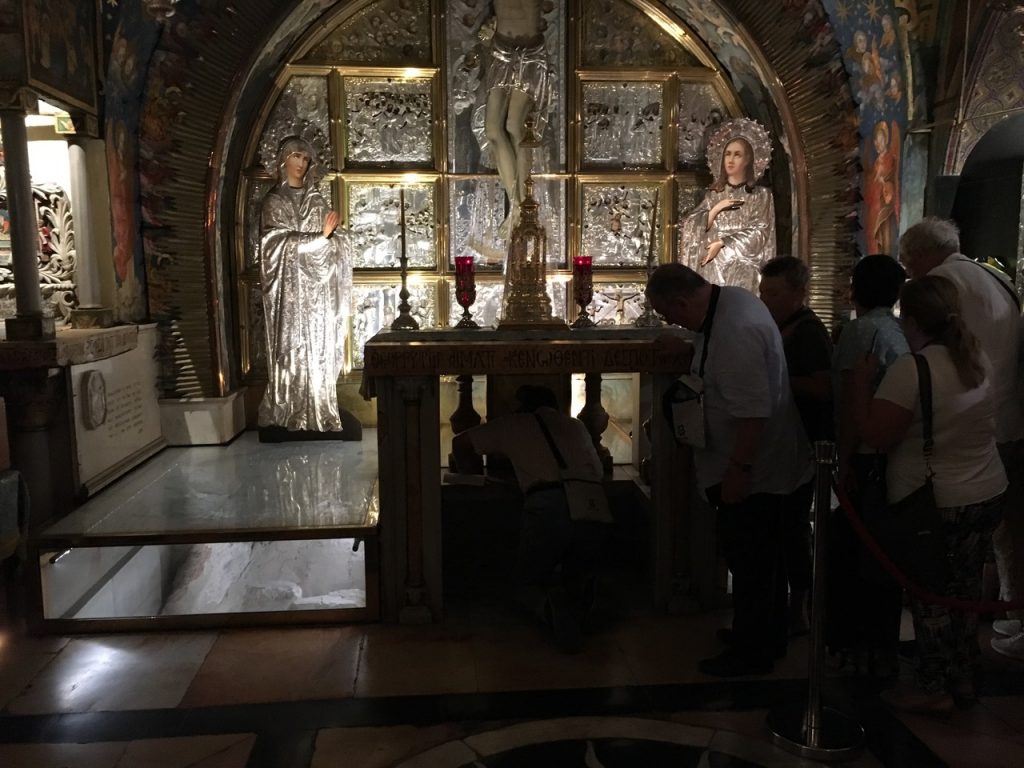
The site of Jesus’ crucifixion as it is today.
